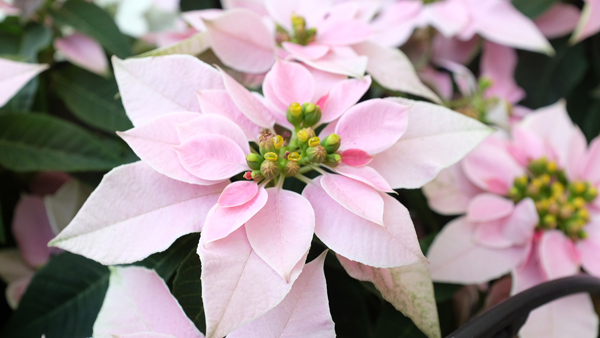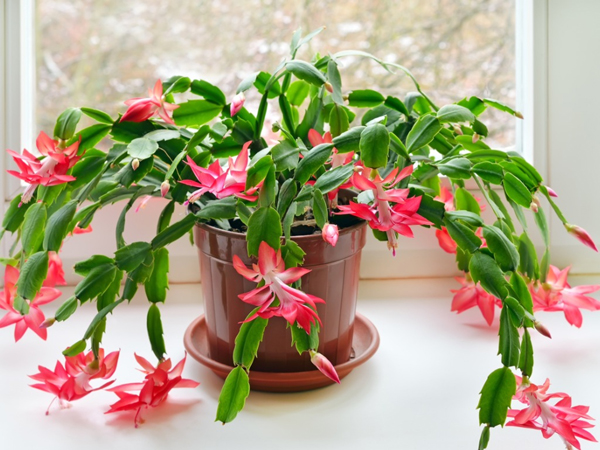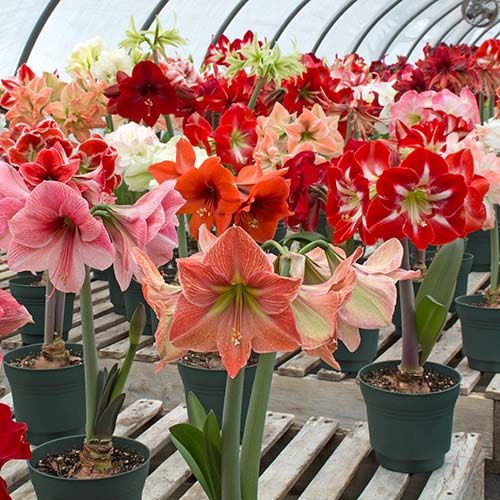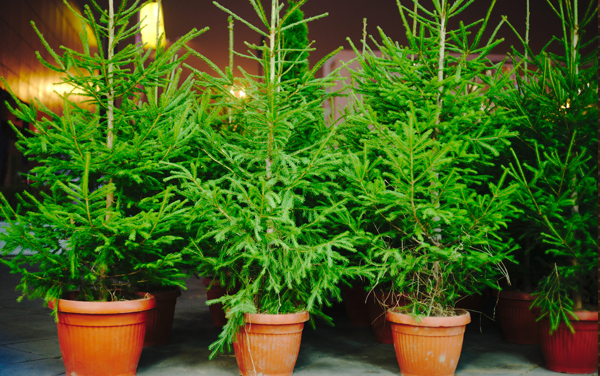
The last month of this memorable 2020 is upon us, and most can’t wait for its demise. Holiday cheer has been arriving early this year. Historically, during the winter months, greenery would be brought indoors around the solstice to remind residents that life continues through the cold, winter months.
Holly is one of those greens, and it was admired for its “magical” properties of keeping homes safe from lightning. Science has proven the magic is due to the shape of the plant’s leaves. It has the whitest wood and is a longtime favorite of woodworkers and craftsmen. Not surprisingly, it is the wood from which Harry Potter’s wand is made.
During this season, we often purchase or receive traditional Christmas plants: poinsettias, Christmas cactus, amaryllis and live trees. These plants are very easy to care for and can often be easily coaxed into blooming during the holidays for years to come. What you need is knowledge—the how-to. But as with any how-to, there are no guarantees.
Choose a poinsettia with small, tightly clustered yellow buds in the center and crisp, bright, undamaged foliage. You want to keep the plant in a stable environment: no drafts, no hot TV perches, no radiators. Water it only when dry and be sure it does not sit in water. The plant is happiest in a room with bright, natural light for six hours each day. Try to ensure that there is direct sunlight on the leaves for at least one hour each day. They last 4–6 weeks before the bracts (leaves) start to fall off.
In January, fertilize the poinsettia. It may become long and leggy. Trim it back then to about five inches tall. Through the late winter and early spring, continue to remove dead leaves and dried parts of the plant. Keep in a bright location and add more soil as needed. It is typical to repot in late spring, trimming two to three inches of the branches to encourage stronger growth and more branches. Move it outdoors to a shady location. Continue to care for it with water and fertilizer. Move it back inside after Labor Day. Starting near the autumnal equinox (Sept. 21), give the plant 13 hours of darkness (cover with a box, locate in a closet) and 11 hours of bright light. Temperatures should be about 60 degrees at night. After Thanksgiving, locate the plant so it gets six hours of sun during the day. The day/night treatment should be stopped and fertilizer can be reduced. Water when dry. The cycle starts again.

The most important factor in maintaining a Christmas cactus is the moisture of the soil. The plant should never sit in water. It does require frequent and thorough watering through the spring and summer to keep the soil slightly moist. Less water is better than too much water. You never want the soil to be bone dry. You can maintain a tray of pebbles with water under the plant for more humidity. Adding a fertilizer regularly during the growth cycle also helps. Ideally, it should be located in a north- or east-facing window. If it goes outside in the summer, it needs a shady location. The plant likes temperatures between 65–75 degrees. In the fall, cut back on the watering, fertilizing, light and temperature by mid-October for a Christmas bloom. The plant will set buds when day length is about equal to night length and when the temperature drops to 50 or 60 degrees for several weeks. The plant does require a minimum of 12 hours of darkness. Resume watering lightly in November. Ideally the plant blooms in December. Bud drop is caused by insufficient light and overwatering. Continue light watering until new growth appears in the spring.

Amaryllis plants do best in a bright window. Water the plant from the top of the container thoroughly whenever the top two inches of the soil is dry to the touch. Drain excess water to avoid root and bulb rot. Fertilize regularly. You can move the plant outdoors when all danger of frost is past. Place it in the shade initially but move it into a garden where it can receive about six hours of sunlight a day. Continue to fertilize. Bring the plant back indoors before the first frost. Amaryllis do not require a resting period and will bloom if kept evergreen. However, blooming time can be controlled by allowing the bulb to go through a resting period. After bringing the potted plants indoors, store them in a dark place like a basement or cool closet (above freezing) and do not water. Do not remove the foliage until it has become dry and shriveled. The bulbs can be forced into bloom again after resting for 8 to 12 weeks. Inspect the bulbs periodically and bring them into light if new growth appears. If no new growth appears, they can be forced to bloom by bringing them into bright light and watering the soil thoroughly. Usually one or more flower stalks appear first, but occasionally they are preceded by leaves. Flowers usually develop in about four to six weeks from dormant bulbs, so they can be timed to flower at Christmas or for Valentine’s Day.
Amaryllis plants bloom best when they are pot-bound, so they require repotting only every three or four years. The best time to repot them is after they have gone through a dormant period. Return them to the light and the cycle starts again.

If you have a Christmas tree that can be planted outside after the holiday, you need to prepare. First, respect that these trees, for their health, cannot be inside for long, ideally a week at the most. Trees are sold with their roots in a burlap bound ball. You will need to prepare the hole for the planting before the ground freezes and while it is possible to dig. When you bring the tree inside, locate it away from fireplaces and heat sources. The tree does need water so you will need a big bucket for the root ball. Water it thoroughly. Excess water will drain through the root ball. It should not be totally immersed in water but have several inches of water in the bottom of the bucket. Water again, if needed, when there is very little standing water remaining. Minimize the lights used on the tree. Get the tree out of the house and into the ground as soon as possible after the holiday. Remove anything that will not decompose, including plastic burlap, mesh, wire. Be sure there is nothing at all around the trunk. The root ball should not be completely covered but several inches above ground. That should mimic how it was positioned in the ground before purchase. Build a bed around the raised root ball. Do not fertilize until spring. Stake the tree upright to assist in withstanding winter winds.
Enjoy your plants. Best wishes for continued holiday memories as you care for them throughout the year.
It may be cold outside but there is still plenty to do. The land should not be left bare and there are a couple of options.
Cover the garden area with a weathered mulch throughout the winter. I will often buy baled straw as a mulch. Pine straw is great for acid-loving plants like blueberries. Another option is to plant a cover crop. If you have a lot of leaves from the autumn trees, let the mower chop them and then spread leaf pieces over the gardens as another form of mulch. You could also pile your leaves over the cleaned vegetable bed. The leaves eventually break down to a rich leaf mold that supports soil health. No need to bag leaves and trash them. It is too cold to sprout seeds for a cover crop, but in warmer weather it is an option instead of mulch.
Any of these methods are adding humus and nutrients back to the soil, and building the soil is a great by-product. When it is time to plant, slightly pull back the mulch to allow a row of seed or a seedling.













